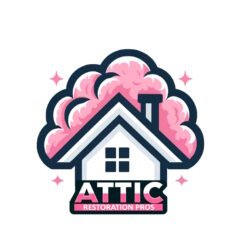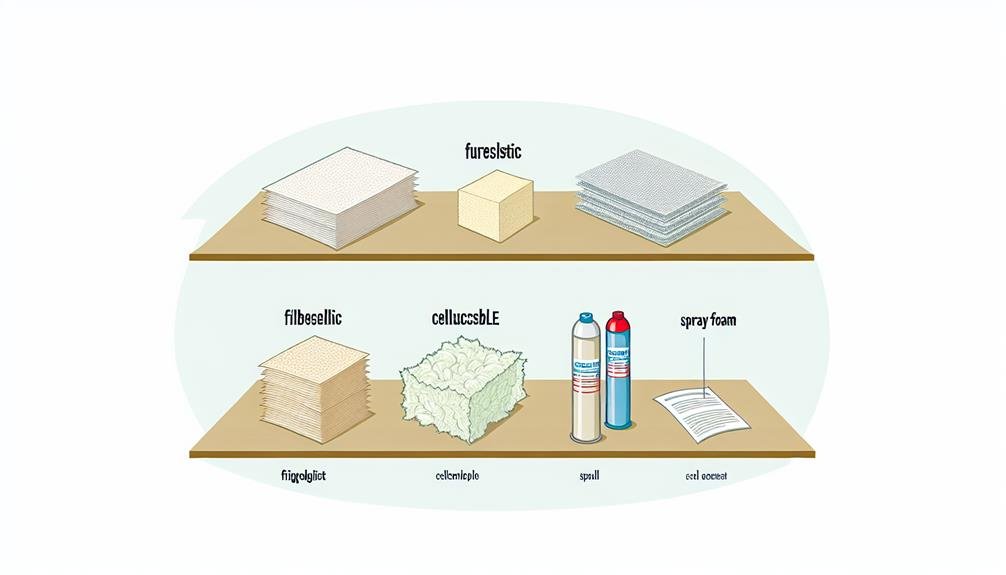When it comes to restoring your attic, selecting the most suitable insulation material is important for ensuring top energy efficiency and comfort in your home. With a variety of options available, each offering unique benefits regarding R-value, cost-effectiveness, environmental considerations, and ease of installation, the decision-making process can seem overwhelming. Understanding the key factors that influence the choice of insulation material is essential for making an informed decision that aligns with your specific needs and priorities. Let's explore the essential aspects to ponder when determining the best insulation for your attic restoration.
Key Takeaways
Contents
- Consider insulation with high R-Values for energy efficiency.
- Prioritize materials with fire resistance and moisture control.
- Choose sustainable options like cellulose or wool insulation.
- Ensure proper installation to maximize insulation benefits.
Types of Insulation Materials
When considering attic restoration, understanding the various types of insulation materials available is important for making an informed decision on the best option for your specific needs. Insulation plays a vital role in maintaining a comfortable temperature in your home, as well as in providing other essential benefits such as soundproofing and pest prevention.
One key aspect to keep in mind when choosing insulation material is its fire resistance. Opting for materials with high fire resistance can help enhance the safety of your home, especially in areas like the attic where the risk of fire hazards may be higher. Additionally, insulation materials with good moisture control properties can help prevent the buildup of mold and mildew, contributing to a healthier indoor environment.
Soundproofing is another important factor to take into account when selecting insulation for attic restoration. Insulation materials that offer soundproofing capabilities can help reduce noise transmission between different parts of the house, creating a quieter and more peaceful living space. Furthermore, choosing insulation that deters pests can help safeguard your attic against unwanted intruders like rodents or insects, preventing potential damage to your property.
R-Value and Energy Efficiency
Understanding the concept of R-Value is essential for evaluating the energy efficiency of insulation materials in attic restoration projects. R-Value measures the ability of insulation to resist heat flow. The higher the R-Value, the better the insulating effectiveness of the material. When comparing insulation materials, it is important to take into account their R-Values to determine which option provides the best thermal resistance for your attic.
Different insulation materials have varying R-Values. For example, fiberglass insulation typically has an R-Value ranging from 2.9 to 3.8 per inch, while cellulose insulation has an R-Value of about 3.2 per inch. Spray foam insulation, on the other hand, boasts higher R-Values that can range from 6 to 7 per inch. Understanding these R-Value differences is key to selecting the most energy-efficient option for your attic restoration project.
Investing in insulation materials with higher R-Values can lead to significant energy savings benefits. By choosing insulation with better thermal resistance, you can reduce the amount of heat transfer between your attic and the outside environment. This means your heating and cooling systems will run more efficiently, resulting in lower energy bills. When taking the R-Value comparison of insulation materials into account, prioritize those that offer the best energy efficiency to maximize savings in the long run.
Cost Analysis and Budget Considerations
To effectively manage an attic restoration project, it is imperative to thoroughly evaluate the cost analysis and budget considerations associated with different insulation materials. When assessing which insulation material to use, cost effectiveness and long term savings should be key factors in your decision-making process. Here are some points to take into account:
- Initial Cost: Compare the upfront cost of different insulation materials. While some may have a higher initial cost, they could result in long term savings through energy efficiency.
- Energy Savings: Calculate potential energy savings over time with each type of insulation. Materials with higher R-values may cost more initially but can lead to significant savings on heating and cooling bills.
- Maintenance Costs: Take into account the maintenance requirements of each insulation material. Some may require more upkeep or replacement over time, impacting overall costs.
- Durability: Evaluate the durability of the insulation materials. Investing in a more durable option upfront can save money in the long run by avoiding frequent replacements.
- Return on Investment: Look at the overall return on investment for each insulation material. While some may be cheaper initially, others could provide greater long term benefits in terms of cost effectiveness and savings.
Environmental Impact and Sustainability
Environmental considerations play an important role in selecting the most suitable insulation material for attic restoration projects. When choosing insulation for your attic, it is essential to assess the environmental footprint and sustainability of the materials. Opting for insulation made from renewable resources can greatly reduce the impact on the environment and contribute to a more sustainable future.
| Insulation Material | Environmental Footprint | Renewable Resources |
|---|---|---|
| Fiberglass | Low | No |
| Cellulose | Moderate | Yes |
| Spray Foam | High | No |
| Wool | Low | Yes |
Fiberglass insulation, while effective, is not sourced from renewable resources, impacting its sustainability. Cellulose insulation, on the other hand, offers a more environmentally friendly option as it is made from recycled paper and wood fibers. However, its production process may still have a moderate environmental footprint. Spray foam insulation, although providing excellent insulation properties, has a high environmental footprint due to the chemicals used in its manufacturing. Wool insulation is both effective and sourced from renewable sheep's wool, making it a sustainable choice for attic insulation projects. By considering the environmental impact and opting for materials made from renewable resources, you can make sure that your attic restoration project is not only energy-efficient but also eco-friendly.
Installation Process and Compatibility
Efficiently installing the chosen insulation material in the attic is important for ensuring top performance and compatibility with the existing structure. When considering the installation process and compatibility of insulation materials, there are several key factors to keep in mind:
- Material Durability: Opt for insulation materials that are durable and long-lasting to guarantee they remain effective over time.
- Installation Techniques: Utilize proper installation techniques to make certain that the insulation is evenly distributed and fills all gaps and voids in the attic space.
- Sealing Air Leaks: Seal any air leaks in the attic before installing insulation to prevent energy loss and maintain the effectiveness of the insulation material.
- Moisture Control: Guarantee proper moisture control measures are in place to prevent mold or mildew growth, which can compromise the durability of the insulation.
- Compatibility with Existing Structure: Choose insulation materials that are compatible with the existing structure of the attic to avoid any potential issues or damage in the future.

